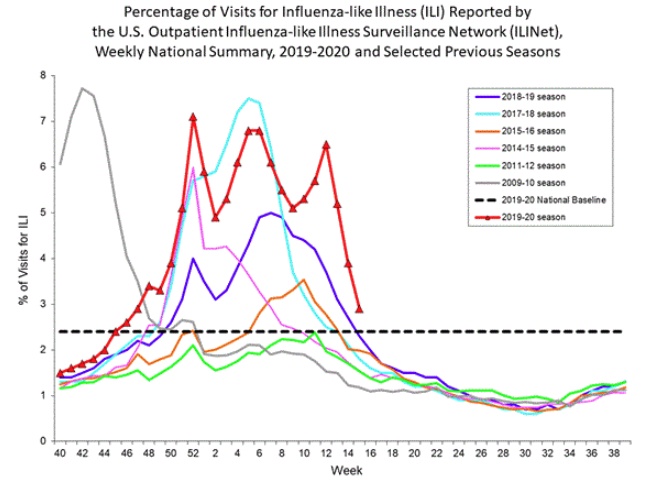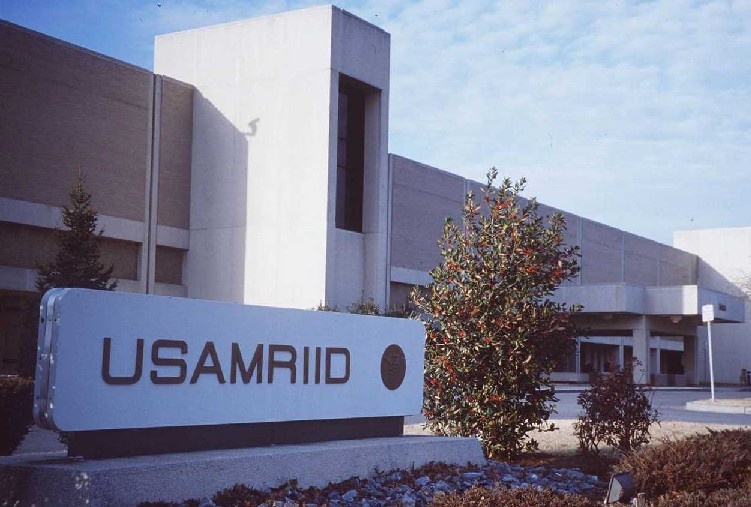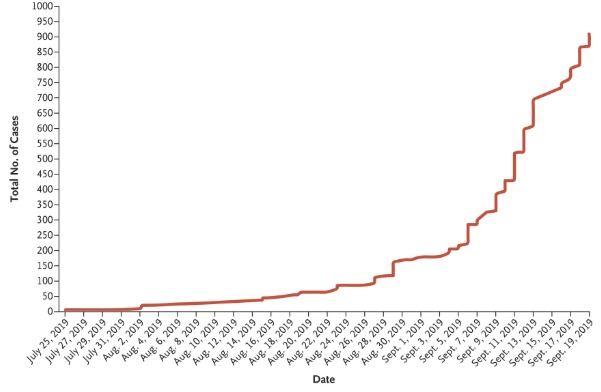The hypothesis of a laboratory leak, which until a few weeks ago was immediately classified as a conspiracy theory, is now being considered by almost the entire press as a plausible explanation for the emergence of Covid-19 (#1, #2, #3, #4). Unfortunately, by focusing exclusively on the Wuhan laboratory, the French media are playing into the hands of the Trump administration and seem to forget that such a leak could have occurred anywhere in the world.
As I mentioned in my previous post entitled “Origins of the Pandemic: Why We Should Not Blame China” (#5), the Wuhan origin of the virus remains uncertain and the United States is also on the list of potential suspects if the laboratory leak hypothesis is retained. Indeed, like China, Americans are extremely active in research on bat coronaviruses. While Ralph Baric’s laboratory at the University of North Carolina is certainly the most publicized due to controversial experiments aimed at making these viruses more aggressive to humans (#6, #7), many other organizations are working on the subject. Beyond universities and pharmaceutical companies, coronaviruses have been studied for over ten years by the US military (more on this later) and by private entities like Ecohealth Alliance (#8, #9) — specializing in the discovery of new bat viruses and having published more than fifty scientific articles on the subject since 2013 (#10).
Today, I propose to delve deeper into this American hypothesis, hoping it will help balance the debate, which dangerously leans towards a form of primary Atlanticism tinged with conspiracy theories. But I am well aware that this is a sensitive subject, whose discourse can easily be “recovered” to fuel other conspiracy theories. This post, therefore, cannot do without a preliminary warning.
The facts outlined below in chronological form should in no way be interpreted as a body of evidence. They merely illustrate a hypothesis among others, which needs to be formally tested. The temporal juxtaposition of events does not imply the existence of a causal link. It is also important to avoid being convinced by the multiplication of converging information, as these pieces of information have been chosen to support the plausibility of a particular hypothesis, and thus suffer from significant selection bias. Finally, and most importantly, we must not forget that hundreds of scientific publications suggest that the emergence of the virus is most likely natural and that human error is, on the contrary, improbable. We know that humans come into contact with bats on all continents, that animal-to-human transmissions are frequent, and we understand the general mechanisms governing this process.
I encourage readers attracted, like myself, to the examination of alternative scenarios to differentiate between the political stakes surrounding the hypothesis of a potential laboratory escape and the medical-scientific approach for whom this hypothesis is as improbable as it is useless in terms of combating the pandemic itself. This battle is being fought in the search for effective treatments and vaccines, which do not depend on the virus’s nationality.
Mid-July 2019: Unexplained Pneumonia Outbreak in Virginia
On July 11, 2019, a pneumonia outbreak occurred in a retirement home in Virginia, on the east coast of the United States (#11, #12). With 63 residents and 19 staff members infected (3 deaths), the event was serious enough to be reported to the Center for Disease Control (CDC), which oversees federal epidemiological surveillance. However, according to the Fairfax County report (#13), the CDC could not isolate the cause and only found the common cold virus in a minority of patients.
Other similar events occurred nearby, and Virginia health services reported between 16 and 19 local respiratory disease outbreaks during the summer of 2019 (#14, #15, #16), which is an abnormal toll for this small East Coast state.
Late November: The Flu Season Begins Particularly Early in the United States
Following the vaping-associated pneumonia epidemic came the flu epidemic, well known for generating symptoms similar to Covid-19, including respiratory difficulties that can lead to pneumonia. In late November - early December 2019, many regions reported the early onset of flu-like symptoms and respiratory illnesses (#30, #31, #32, #33, #34, #35). Federal data indicates that the flu epidemic started almost a month earlier this year (#36) and that excess mortality was observed compared to previous years (#37).

Unlike EVALI, the flu can be formally tested. However, looking closely at the data, the number of samples collected is tiny compared to the number of cases reported (hundreds out of hundreds of thousands of cases), and only 10 to 15% of samples show a flu virus infection (#38).
From the perspective of an American origin preceding the explosion of cases in Wuhan, it is conceivable that the EVALI and flu epidemics contributed to Covid-19 going unnoticed by the authorities.
April 2020: Over 700,000 Americans Infected by the Virus and Unanswered Questions
Two months later, the United States is one of the nations most affected by the epidemic (#50). This catastrophic toll is partly explained by the superpower’s inability to develop an effective test before the end of February, even though the necessary technology has been used for twenty years in countless laboratories around the world (#51).
The numerous infection clusters that went unnoticed by the CDC obviously contributed to this rapid evolution. But given the detailed chronology above, one can legitimately wonder how long Covid-19 has been present on American soil. Is it possible that the epidemic began in the United States through short transmission chains, in Virginia and neighboring states, before disguising itself as a vaping-related pneumonia epidemic with clinical manifestations similar to Covid-19?
In theory, these questions could receive a positive answer if the suspected pneumonia cases mentioned above were retrospectively tested for Covid-19. It is even conceivable that the CDC questioned the link between the Covid-19 epidemic and the vaping-related pneumonia epidemic. However, if the test results performed at the beginning of the pandemic cannot be interpreted due to the technical errors that are now causing a scandal, this question may remain unanswered forever.
To insinuate that it might not be in the American administration’s interest to reveal such results would be to make an accusation without basis here. However, if we accept the hypothesis of an American origin, nothing prevents us from examining potential triggering events.
Of course, nothing excludes an animal-to-human transmission on American soil, as American bats also constitute — like their African, European, or Chinese counterparts — a reservoir of coronaviruses (#52, #53, #54). However, if the virus emerged naturally, it is much more plausible that the event occurred in China due to the proximity between Covid-19 and a bat coronavirus discovered on Chinese territory (the famous BatCov-RaTG13).
In other words, if we turn to the West, it makes sense to examine the possibility of human error, and in particular, the possibility of an incident involving the USAMRIID laboratories based at Fort Detrick (Maryland).
Back to August 2019: Sudden Closure of the Fort Detrick Laboratory
On August 2, 2019, the CDC ordered the sudden closure of the P3 and P4 laboratories at Fort Detrick in Maryland (#55), two weeks after the suspicious pneumonia outbreak that opened the above chronology. At Fort Detrick, located just 65 kilometers from the Greenspring retirement home, the US military conducts research on the world’s most dangerous infectious agents, including the plague bacillus and the Ebola virus. Many American media outlets reported this information and reminded readers that Fort Detrick is known not only for its historical role in American bioweapon programs but also for its probable involvement in the anthrax-contaminated letters scandal in September 2001 (#56, #57, #58).
The problem detected by the authorities was apparently multifactorial, without a clear indication of which factor led to the site’s closure: some procedures did not meet established standards, some personnel had not received adequate training, and a flaw was discovered in the water decontamination system. This flaw apparently dated back to May 2018, when floods damaged the institute’s water circuit (#59), meaning more than a year of research was conducted under defective safety conditions.

Without going into detail, it should also be noted that these anomalies occurred in a very particular context: a legal battle between Battelle Memorial Institute — the private company operating the site — and Laulima Government Solutions regarding the management of the site’s decontamination process (see the US government’s decision in this dispute: #60). In October 2019, Laulima, which proposed a $150 million project against $190 million for Battelle, ultimately won and became responsible for decontamination, despite apparently limited experience in this area. It may seem surprising that a laboratory of such strategic importance to the US military is managed by a private company subject to profitability imperatives, but this is actually common in the United States. Battelle alone directly manages 9 major research centers on American soil (#61). The Fort Detrick center is managed by one of its subsidiaries, Tunnel Government Services (#62).
Although coronaviruses are not Fort Detrick’s specialty, it is known that some research has recently focused on the MERS coronavirus (see this 2018 publication, #63). It is also known that this laboratory has used advanced technology called CRISPR-Cas9 to selectively extract certain genetic sequences from several viruses, including Ebola (#64). And not just any sequences. Indeed, the objective of the article in question was to extract sequences coding for a “furin cleavage site” which is also involved in Covid-19’s virulence and whose presence in the Covid-19 genome is considered “unexpected” by researchers (#65, #66, #67).
Should we believe, based on this information, that Covid-19 resulted from human error at Fort Detrick and silently spread in the United States before mutating in Wuhan to eventually cause the pandemic we are facing?
No. We should continue to associate a very low probability with this hypothesis and prioritize the overwhelming consensus among researchers that the virus emerged naturally in China, following direct contamination of a human by a bat or an intermediate animal yet to be discovered.
At most, we can use the information reported here to avoid being blindly drawn into the strategy of Trump, Mike Pompeo, Fox News, and to a lesser extent Emmanuel Macron or other Western leaders, who are quick to insinuate that China is morally responsible for the pandemic (#68, #69, #70, #71).
According to a 2018 report to the US Congress (#72), the management of P3 and P4 laboratories is far from flawless in the United States. Source of scandals in the past, these laboratories are both older and more numerous than in China. Their operation by private companies raises doubts about their reliability in a context of cost reduction and economic difficulties exacerbated by Trump’s arrival in power (#73).
While virus research is obviously necessary, many experts fear that some P3 and P4 laboratories are ticking time bombs (#80, #81, #82). The Covid-19 pandemic and the suspicions it raises could thus be an opportunity for collective awareness: the gradual proliferation of these laboratories mathematically increases the risks faced by the entire planet. If Covid-19 is probably of natural origin, nothing tells us that the next pandemic will be as well. It may be time to raise the safety standards currently applied in China, the United States, and elsewhere…
